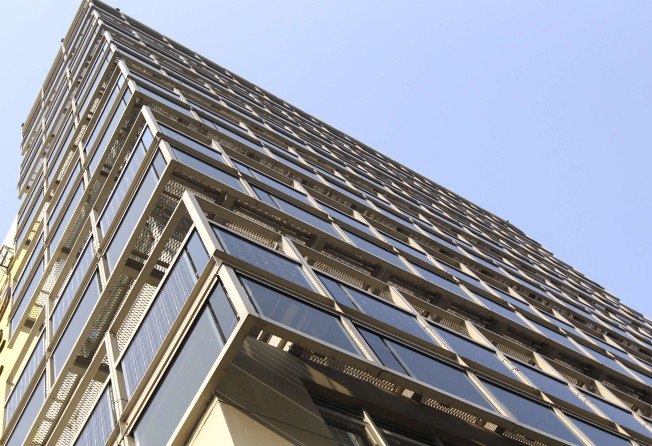Green light: Hong Kong to go flat out to build eco-friendly skyscrapers
Following on from the government convened Climate Change Stakeholder Engagement Forum, more focused efforts are now being made to make the city’s high-rise buildings cost-efficient and environmentally friendly

In the near future, Hong Kong is expected to go full swing in the use of green technology for skyscrapers, making them cost-efficient and environmentally friendly.
Earlier this month, the government convened the Climate Change Stakeholder Engagement Forum, attended by officials, stakeholders and legislators, to exchange views and come up with a strategy to reduce the city’s carbon footprint. The forum was chaired by the Chief Secretary for Administration Carrie Lam. Also involved in the forum was Secretary for the Environment Wong Kam-sing and representatives from other relevant policy bureaus and government departments.
The concept of green buildings is being aggressively pursued by the government as they can significantly save energy and water without incurring substantial costs, according to experts.
At the moment, Hong Kong does have a number of certified green buildings, according to the World Green Building Council. This could be ascribed to government incentives, in particular the granting of extra buildable floor area on new projects having achieved or pursuing a green-building certification.
The city’s certification system is based on the Building Environmental Assessment Method (BEAM) Plus, which is a voluntary group and is owned by the BEAM Society, a non-profit organisation. Hong Kong Green Building Council (HKGBC) is the certification body.
Getting “additional gross floor area is undoubtedly one of the key incentives that motivate developers to pursue a BEAM Plus certification on their new-build projects”, says Nathan Lee, chairman of building surveying, project management and environmental professional group of the Royal Institution of Chartered Surveyors Hong Kong board.
It appears that it would make good commercial sense for a developer to pursue a green-building certification in exchange for more floor space – enabling future occupants to save energy costs and live a healthier life. Existing buildings would also benefit enormously from embracing green technology.
According to a study by the HKGBC and Swire Properties, the estimated cost-saving for existing buildings after a major retrofit can be as much as 45 per cent from making building services components energy efficient, including the heating, ventilation and air conditioning system, and lighting, electrical installations, lifts and escalators, among others.
Energy-efficient air conditioning and water recycling systems installed in hotels and shopping malls could result in substantial savings on utility costs over a few years, Lee explains.
The HKGBC and the BEAM Society have also upgraded the BEAM Plus assessment on existing buildings. In addition to a one-time, comprehensive review, the assessment now allows existing building owners to opt for the selective scheme, in which grading is awarded separately on each aspect.
As the selective scheme has a lower threshold and greater flexibility on assessment, the HKGBC says it expects to attract more owners of older buildings to participate in the scheme.
In commercial real estate, the green building technology is also driven by multinational corporations’ global sustainability policies, which require them to choose energy-efficient, eco-friendly space whenever such option is available.
To secure multinationals as long-term tenants, commercial landlords appear to be willing to invest in energy-efficiency upgrades in order to meet international green-building standards, such as the Leadership in Energy and Environmental Design (LEED) certification.
Matthew Clifford, head of energy and sustainability services at JLL, in north Asia, says multinational clients are increasingly sophisticated when looking for green spaces.
“A few years ago, [multinational] clients placed a high premium on buildings with green-building certifications, but they didn’t look much beyond the label. However, this approach is long outdated, and we are now seeing clients ask a lot more detailed questions about what features contributed to this rating, or indeed, having their own very detailed list of features that they are looking for.”
If landlords are pursuing the very latest technologies, or the most ambitious green ratings, the upfront cost may only be marginally higher, although this is usually offset by lower operating costs over the life of an asset, he adds.
Albert Lai, CEO of Carbon Care Asia, a social business in carbon strategy and sustainability innovation, expects to see some real changes to the city’s green-building policy later this year as the government has pledged to create a concrete action plan.
“This is a good start, but that’s not enough. We don’t lack voluntary guidelines or best practices. But we are still far behind the EU, which imposes green building rules and regulations to drive innovation.
“In order for our community to reap the true benefits of green buildings, we need the carrot-and-stick approach by offering a combination of rewards and mandatory rules.”
One innovative green feature he suggests is installing solar systems on approved rooftops.
By installing solar panels on a roof, the electricity generated can be sold back into the grid and allow landlords to make money. Companies joining the programme can also sell excesses to the power company for income in the form of credits and savings.